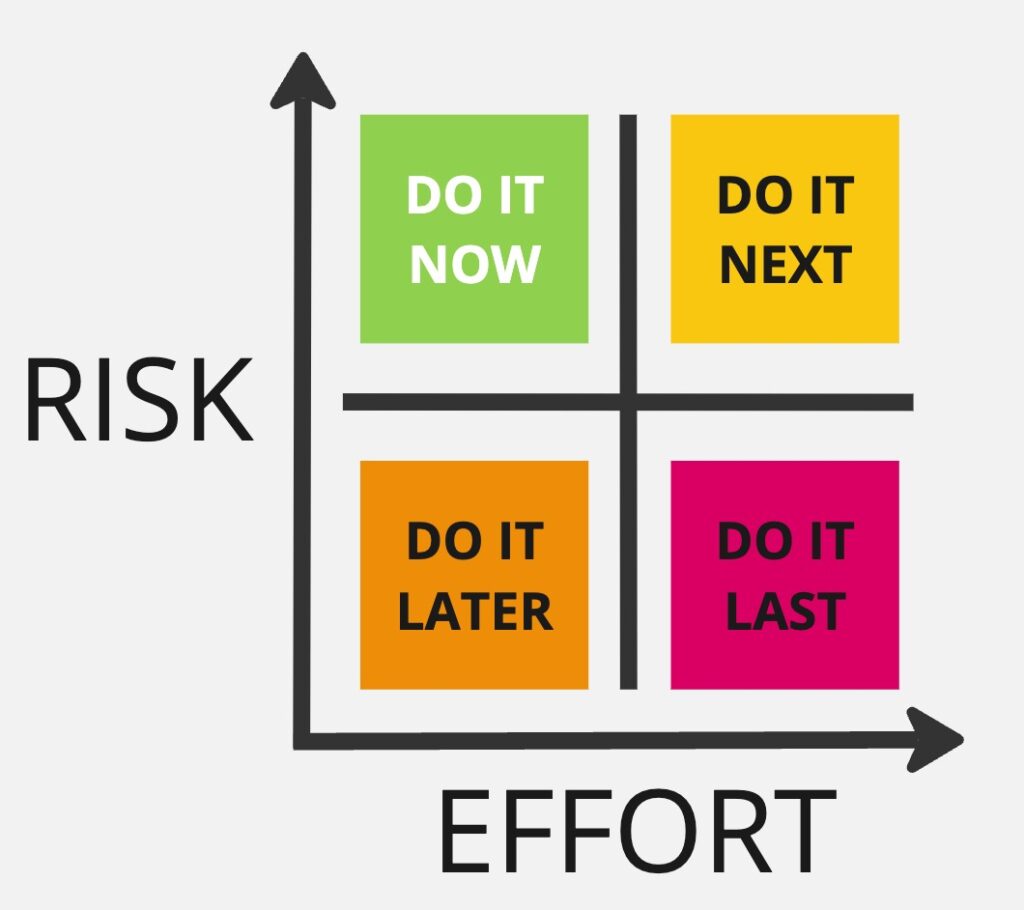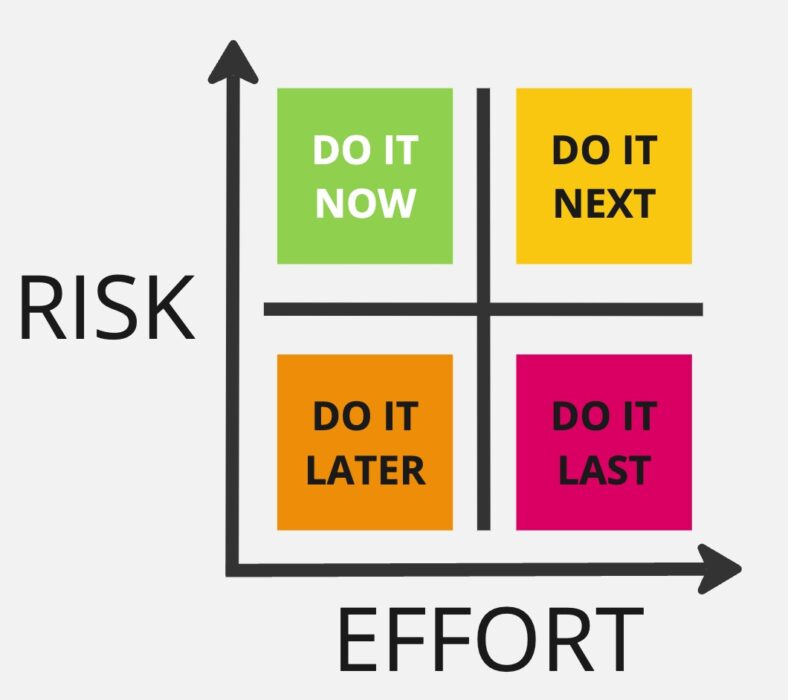The wonderful Melissa Fisher just posed a great question on LinkedIn. How do you balance creating new test automation against working on existing test automation tech debt? Unsurprisingly, I agree with Melissa’s answer. That this is a conversation around risk. Something I have looked for and never found is a Risk Effort Matrix that is both simple and suits my needs. Melissa’s question prompted me to finally draw it for myself.

Taking a heavy dose of inspiration from an Eisenhower Matrix, we end up with a simple, easily understood, starting point for conversations around Risk based prioritisation that can be applied to various types of work.
High Risk, Low Effort
Do it now! Any work that is a low effort and mitigates something considered high risk should be done as the next most important thing. Reducing risk is the most important aspect of risk based prioritisation. Anything in the High Risk, Low Effort category is work that removes/reduces risk in a high risk area and can be achieved quickly.
High Risk, High Effort
Do these next. Once you have completed all the High Risk, Low Effort tasks, then prioritising the areas of High Risk that require more effort are, potentially, the next most important. There is a balance required here. Where the time spent on a single high risk area may be so great, that the value of doing more Low Risk, Low Effort items offer greater overall value. This is where risk appetite plays a big part of the conversation. What are the more acceptable risks? And what are completely unacceptable risks?
Low Risk, Low Effort
Do these later. Either after all the High Risk, High Effort items are completed. Or once the time required to do the remaining High Risk, High Effort items is greater than the value of doing the Low Risk, Low Effort items that could be completed in the same time.
Low Risk, High Effort
Do these last, if at all. These are the areas where the level of effort required to complete the task is greater than the return on investment. In testing this could be something that is quick and easy to test manually, with low chance of human error etc. but that would be time consuming to automate.
Summary
There you have it, my Risk vs Effort Matrix for Risk based prioritisation. Hopefully you find this useful. Let me know if you use it with your team, I’d love yours and their feedback.
Further reading
If you enjoyed this post then be sure to check out my other posts on Engineering Leadership.
Subscribe to The Quality Duck
Did you know you can now subscribe to The Quality Duck? Never miss a post by getting them delivered direct to your mailbox. Don’t worry, you won’t get flooded with emails, I post at most once a week.


October 15, 2024 at 1:04 pm
I like this!
Very simplistic and easy to follow!